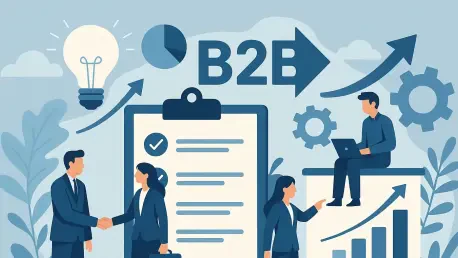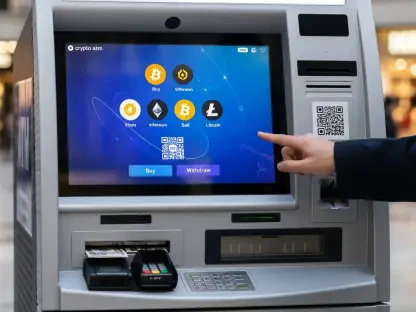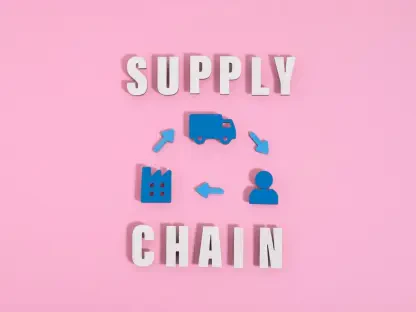Listen to the Article
Although retail has always been one of the fastest-growing and most cutthroat industries, things seem to be moving at a breakneck rate these days, and the stakes for competition are rising as a result of quicker, better, and stronger innovations.
You need a fresh approach. To thrive in this environment, retailers must adopt forward-thinking B2B strategies that enhance efficiency, strengthen partnerships, and drive long-term growth.
This article explores key strategies that retailers can implement in 2025 to stay ahead in a rapidly changing landscape. It all starts with building a robust supply chain system.
Build Resilient Supply Chains
Beginning in the 1990s, in an effort to save costs, several B2B firms adopted lean manufacturing practices and globalized their sourcing and production. As supply chains moved abroad, global trade soared from 39% of the global GDP to 58% between 1990 and 2019.
However, this move toward globalization exposed businesses to a wide range of supply chain risks, such as extreme weather events, labor disputes, and cyberattacks. The COVID-19 pandemic and the economic crisis accompanying it only accelerated these trends and revealed additional loopholes.
Tips to Build a Resilient Supply Chain
Supply chain resilience is the ability to anticipate operational disturbances through adaptable forecasting and contingency planning, to quickly adjust to sudden disruptive changes that negatively affect supply chain performance, and to continue functioning during a disruption.
As a retailer, to achieve this level of resilience, you ought to work with your B2B partner companies to enhance visibility, predictability, and efficiency across the supply chain. Here are some methods to do so:
Leverage real-time tracking: Tracking capabilities are provided on advanced B2B platforms, which allow retailers to observe their shipments in real time, anticipate delays, and thus mitigate risks. One such company is DHL, which has developed a solution that integrates tracking data with predictive analytics.
Take a multithreaded procurement approach: Don’t put all your eggs in one basket—spread the risk by diversifying your suppliers for critical components. The probability of accidental failure of the supply from one of these means that you’re still in good standing because you’ll still have the others.
Implement demand forecasting tools: Technology solutions like Blue Yonder, which are driven by AI, are intelligence techniques that mine market trends, consumer behavior, and outside forces and help optimize the inventory management process.
Having a resilient supply chain is an edge that will allow you to have an advantage over the competition, mainly through its successful implementation. In a competitive business environment, the commitment to operational efficiency becomes a defining factor.
Embrace Technology to Enhance Operational Efficiency
Operational efficiency is a cornerstone of retail success. Retailers must prioritize technology adoption to streamline processes and reduce costs. If your organization embraces this approach, it will be better poised to master retail success.
Tips to Get Started:
Invest in automation: Automation can take many forms. In a retail setting, it might involve machines that stock shelves or software that tracks sales and inventory levels. These tools will allow your business to save time and reduce errors. Businesses such as Amazon and Ocado exemplify how automated systems can transform retail logistics by incorporating mobile robots into their warehouse operations.
Adopt omnichannel solutions: The increasing penetration of digital channels, mobile devices, and social networking platforms collectively drives the need for a smooth omnichannel experience. You need to understand that for your brand to remain relevant, it must be omnipresent. So offer tools to unify inventory, sales, and customer data for a cohesive shopping experience.
Efficiency-driven technology adoption translates to cost savings and enhanced customer experiences.
Enhance Customer Experiences Through Personalization
When it comes to retail sales, today’s B2B buyers expect a similar quality of service to what B2C customers receive. If companies can’t meet these demands, it can badly affect their client relationships and revenue. This is a valid concern, especially for those businesses that have spent years cultivating a strong client base.
The solution lies in enhancing customer experiences through personalization. Your buyers expect you to understand them, their needs, their preferences, and their purchasing history. And today they’re largely underwhelmed with B2B buying experiences, with only 36% rating their typical experiences as excellent.
To mitigate this, leverage B2B tools like the following:
Make use of customer data platforms like Segment, which consolidate all customer data and provide merchants insight into the preferences and actions of their customers.
Adopting AI-driven personalization tools like Dynamic Yield and Algonomy, which use consumer data analysis to target customers with what they want — before they even know it; providing product recommendations, and producing interesting shopping experiences.
Personalized experiences make for stronger customer relationships and increase lifetime value and happier staff members, who ought to be equipped themselves.
Invest in Workforce Enablement
A well-equipped workforce is integral to retail success. Investing in people, enablement cultivates a staff of dedicated, enthusiastic workers. Engaged employees are up to 18% more productive and produce up to 23% more profit, which therefore affects the overall performance, productivity, and your company’s bottom line.
To steer clear of this, focus on training, tools, and technology that empower employees to perform their roles effectively, such as:
Equip employees with the right tools, such as mobile devices and apps for inventory management, customer service, and sales support.
Offer continuous training. Platforms like LinkedIn Learning and Coursera provide scalable training programs to upskill employees in areas like digital marketing and technology adoption.
Foster collaboration amongst teams by use of tools like Slack or Microsoft Teams to streamline communication and improve cross-department teamwork.
A skilled and empowered workforce drives innovation and enhances operational excellence.
To Conclude
The continued evolution of purchasing habits means B2B retailers must differentiate themselves in the market. From building resilient supply chains and embracing cutting-edge technology to enhancing customer experiences, each of the strategies covered in this article addresses critical areas of the landscape.
Ultimately, the strategic implementation of these strategies, combined with a commitment to growth and adaptability, will make you a stand-out retailer in the B2B space. Don’t be caught lacking. The time to act is now—build a resilient, future-ready business.









